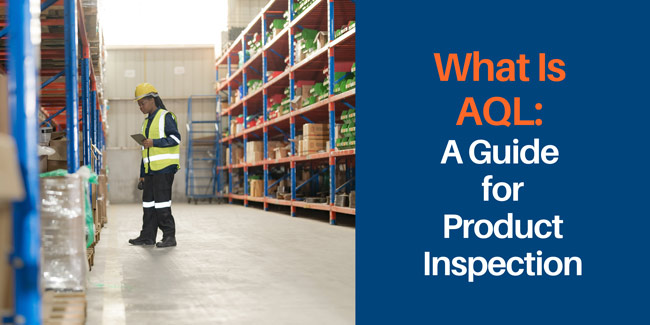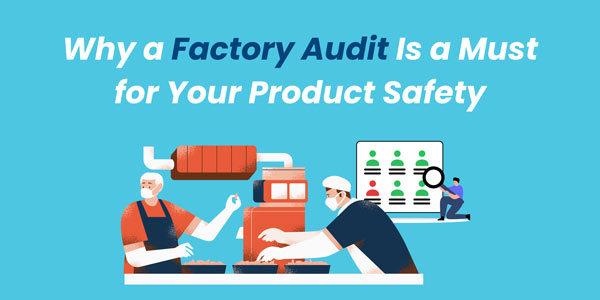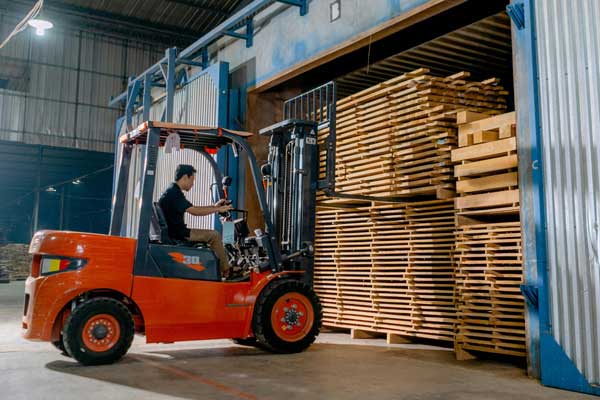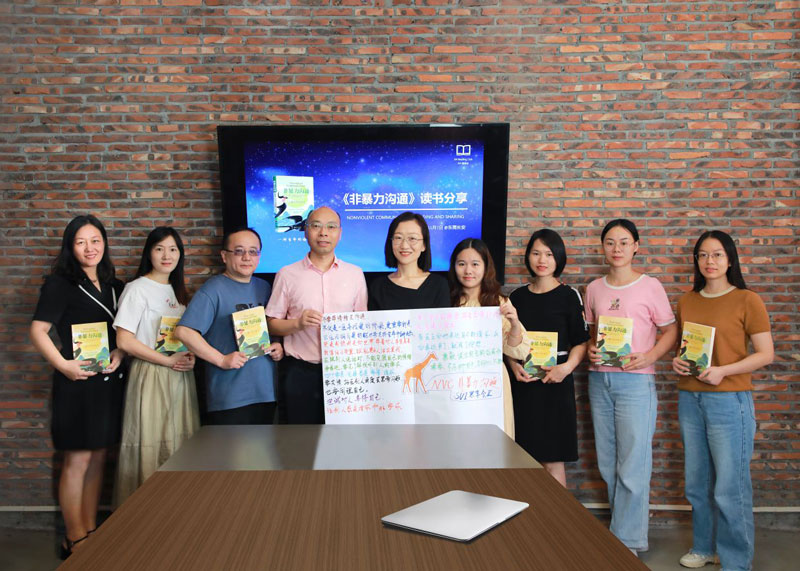What Is AQL? How Does It Work in Product Inspection?
- Date:
- Author: SVI Content Team
- Share:
Quality inspections are essential for ensuring product quality. When dealing with large product batches in thousands, it’s often not realistic or cost-effective to inspect every unit. In this case, we will turn to sampling inspections to assess quality levels efficiently.
In this process, AQL (Acceptable Quality Limit) plays a central role. It is a statistical concept defined and used within the framework of sampling plans with rules for switching and for discontinuation.
It is a key metric to determine sample sizes and acceptance criteria during product inspections. This can give you a clear standard to judge whether a batch passes or fails quality checks.
A well-set AQL also encourages suppliers to maintain better-than-required process averages. In this blog, we will show you what is AQL, what affects it, and how you can set a proper level for your lot.
Part 1. What Is Acceptable Quality Limit (AQL)
1) Definition of AQL
AQL is the abbreviation of “Acceptable Quality Limit” or “Acceptable Quality Level”. It is used in quality inspection and refers to the average quality number (or percentage) of the worst process that is considered acceptable in random sampling inspections of a consecutive series of batches.
The range of AQL can fall between 0.01 to 15.0, depending on the industry and product requirements. AQLs higher than 6.5% are rarely used.
The smaller the value of AQL, the stricter the inspection process, the fewer the acceptable number of defects, while the sampling size is the same. For example:
- AQL 1.0 indicates that only 1% of defects are acceptable.
- AQL 2.5 indicates that only 2.5% of defects are acceptable.
- AQL 4.0 indicates that only 4% of defects are acceptable.
You may use the AQL charts under international standards like ISO 2859-1, ANSI-ASQ Z.14, GB/T 2828.1, BS 6001, etc., to define how many units to inspect and how many defects are allowed for each AQL level.
If the quantity of defective items does not beyond the bounds of acceptable quality limits, the process is said to be at an acceptable quality level; otherwise, the process is said to be at a rejectable control level.
2) Purpose of AQL
It sets the threshold for the maximum number of defects per hundred items that is considered “acceptable” as a process average for the purposes of deciding whether to accept or reject a specific lot based on inspecting a sample.
When the quality is at AQL limits, it tells that the producer’s risk is controlled within a small range, which will increase the acceptable level.
3) Importance of AQL
The AQL limits help businesses to better control product quality. In this hand, this protects both manufacturers and customers.
On the one hand, it tells the producer that as long as the average process quality of his product is better than that of AQL. Then, the vast majority of the lots can be received by the customers, which can prompt manufacturers to maintain and improve the product quality.
On the other hand, the AQL is a globally recognized system that helps businesses ensure their products meet international standards, reducing the number of defective goods, and fostering a continuous supplier relationship.
4) Types of Defects in AQL Inspection (Minor, Major, Critical)
The nonconforming units found in an inspection are usually classified into 3 types of defects: critical, major and minor.
a. Critical
Critical defects are products with serious or zero-tolerance issues. Those quality issues have a fatal impact on the product assembly and usability, could harm users’ health and safety, or violate the regulations.
Examples: electric leakage, electrical short, child toys with sharp edges, pharmaceutical contamination
AQL Level: extremely low (≤ 0.65) – source from Six Sigma
b. Major
Flaws determined as major defects are those that significantly impact product functionality, performance, appearance, or service life. It makes products fail in their intended purpose of use, and could lead to customer complaints or returns.
Examples: products with extensive scratches, severe deformation
AQL Level: moderate (≤ 2.5) – source from Six Sigma
c. Minor
Defects that don’t affect the functionality or performance and are often unnoticed. They don’t meet the prescribed quality standards, but usually will not cause returns.
Examples: loose threads on clothes, small scratches or stains, misaligned labels, slight color differences in non-critical areas
AQL Level: most lenient (≤ 4.0) – source from Six Sigma
Need Help for Your Sourcing Project?
Let SVI Global find the right suppliers and manage your project.
We guarantee quality and on-time delivery!
Part 2. How to Calculate AQL for Your Products
1) What Factors Affect AQL Selection?
Now you know what Acceptable Quality Limit is, then how do you set an appropriate level for your products? The AQL standard is influenced by various factors. Different products hold different standards. You will need to consider the following:
- Product type
- Defect severity
- Risk tolerance
- Industry standards
- Customer requirements & expectations
- Lot size and inspection level
- AQL testing cost
- Quality history of lots
- ……
2) 7 Methods to Determine the AQL
Below are 7 commonly used methods to help determine a proper AQL level for your lots:
Method 1. Build an Inspection Protocol with Factories
Companies and manufacturers may hold different points of view about the Acceptable Quality Level. To be on the same page, it is suggested to build an inspection protocol with factories.
In the protocol, define and agree with factories on defect types, AQL inspection levels, and standards. Specify the AQL sampling size tables, Acceptance/Rejection criteria for each defect type and measurement tools/methods. The protocol will be the baseline for all future inspections.
Method 2. Analyze Historical Quality Data
For the existing products, collect defect data from previous batches and calculate process capability indices.
- If previous batches show a stable process and consistent quality, you can set an AQL slightly above the historical defect rate.
- If the process is inconsistent, you may prioritize process improvement before tightening AQL.
For new products with no historical data, refer to the AQL values of similar products (such as raw materials, structure, process, etc.).
Method 3. Rely on Judgment Based on Experience
Experienced professionals like engineers, QA teams, or responsible department heads can use their hands-on knowledge to set the AQL based on their experience in terms of process capabilities and other aspects.
Method 4. Use Experimental Verification
When no prior data is available, assign a temporary AQL level and observe the results. You will need to adjust the AQL based on the quality information obtained during the process. This method is ideal for new product launches.
Method 5. Estimation Method
Within a factory or enterprise, the AQL can be set by estimating the average defect level of the production process.
To improve the product quality, you can choose a point equal to or slightly lower than the average level, and then adjust it regularly to respond to the process upgrades or shifts.
Method 6. Back Calculation Method
This is a statistical approach that requires expertise but ensures precision. Rather than choosing an AQL, you can choose an inspection plan, use its Operating Characteristic (OC) curve to identify the point where the acceptance probability becomes low (i.e., buyer risk tolerance). And next, reverse-calculate the AQL that aligns with that level of risk.
Method 7. Model Method
This method uses cost modeling to find the most cost-effective AQL level for complex or value-driven products. Often used in high-volume, cost-sensitive industries.
You will build a model that includes inspection costs, defect handling costs, and customer return costs. Then, choose the AQL that minimizes total cost while maintaining acceptable quality.
Need Help for Your Sourcing Project?
Let SVI Global find the right suppliers and manage your project.
We guarantee quality and on-time delivery!
Part 3. How to Choose the Right AQL
To make sure your AQL level is suitable for your products, you will need to keep in mind the following principles.
1. Understand that AQL represents the acceptable average quality level in a process. The average quality numbers or percentage will not exceed the set threshold.
2. Think in terms of the use of the product and the consequences of its failure.
3. Stay feasible in production. Early-stage production may come with higher variability in quality. In such cases, set an achievable AQL that your supplier can meet, and plan to tighten it once production stabilizes.
4. Account for process sequence. If your product involves multiple production stages, and defects from one stage impact the next (causing time and material resources), then set stricter AQLs for earlier processes to avoid cascading quality issues.
5. In the same AQL sampling, apply graduated AQL values for defect types. Critical defects should be stricter than major and minor defects.
6. Match AQL to product criticality. The more important or sensitive the product is, the lower the AQL should be to ensure quality and compliance.
7. Based on what the customer considers acceptable. Align the standards with customer expectations and contract agreements.
8. Weigh inspection costs against the risk of defective products. Stricter AQLs lead to higher inspection and production costs. Sometimes, you may need to negotiate a realistic compromise between ideal quality and what’s affordable.
9. Don’t set an overly small AQL unless absolutely necessary. Too tight of a standard can lead to excessive rejections, strained supplier relationships, and unnecessary cost increases.
Conclusion
Understanding what AQL is and how to apply it correctly can significantly improve your quality control process. It allows you to balance inspection costs with acceptable risk, make go/no-go decisions, and maintain consistent product standards.
By setting the right AQL level, you gain better control over production and build stronger relationships with your suppliers.
When you’re outsourcing manufacturing overseas, managing quality inspections can be challenging. But with SVI Global, we guarantee you the peace of mind.
With over two decades of experience and a professional QA team, we handle factory audits, product testing and inspection, and more to make sure your goods meet your standards before they ever leave the factory.







